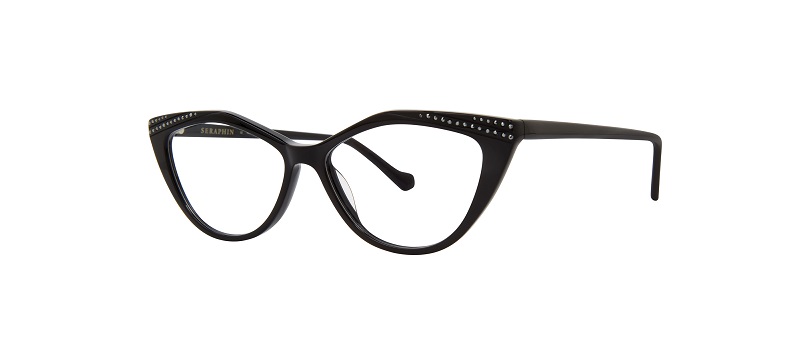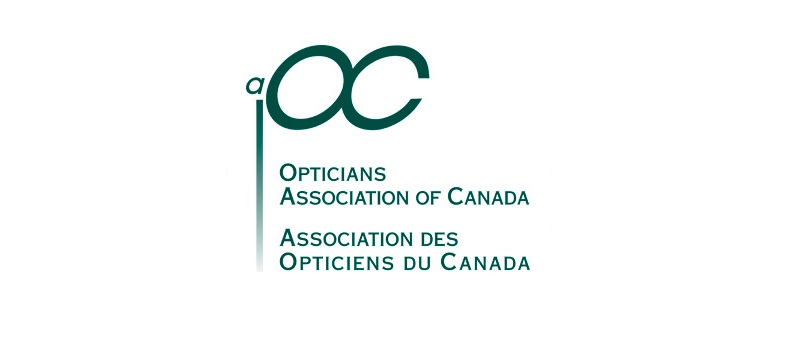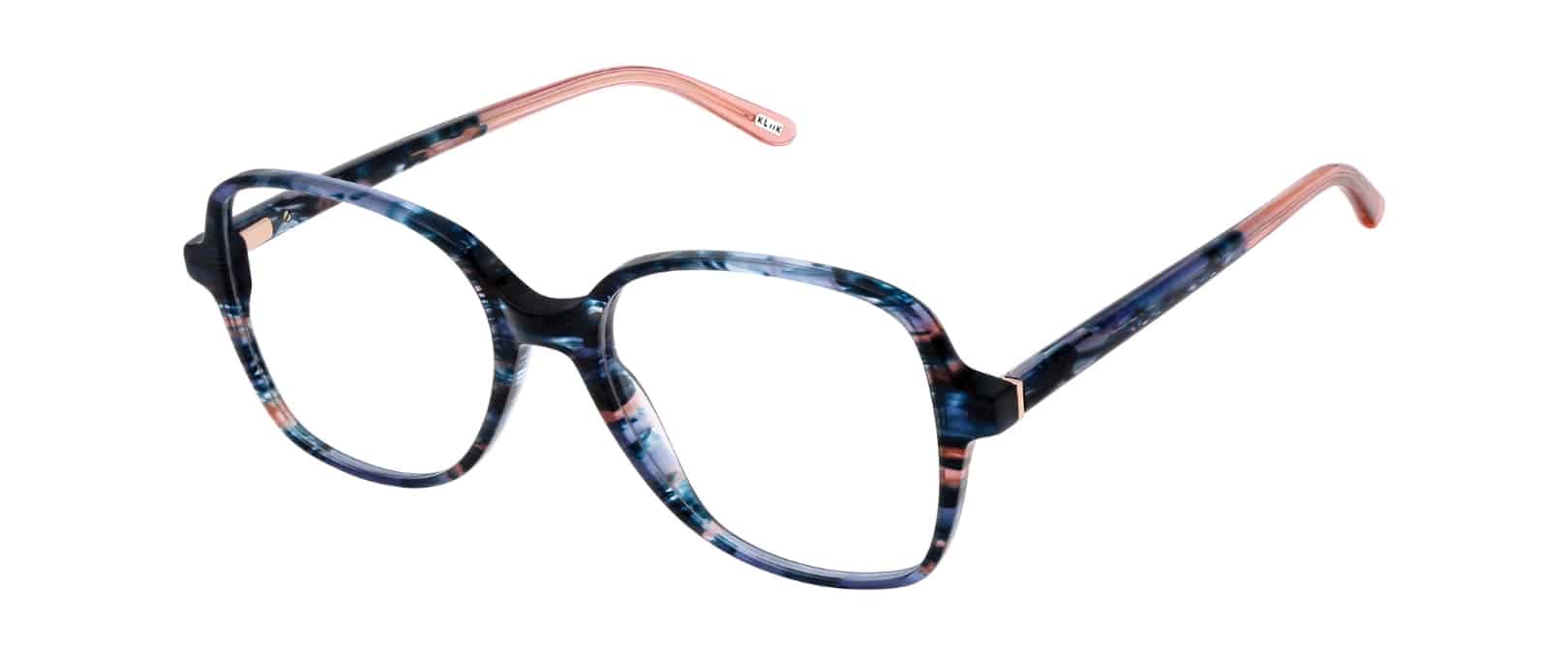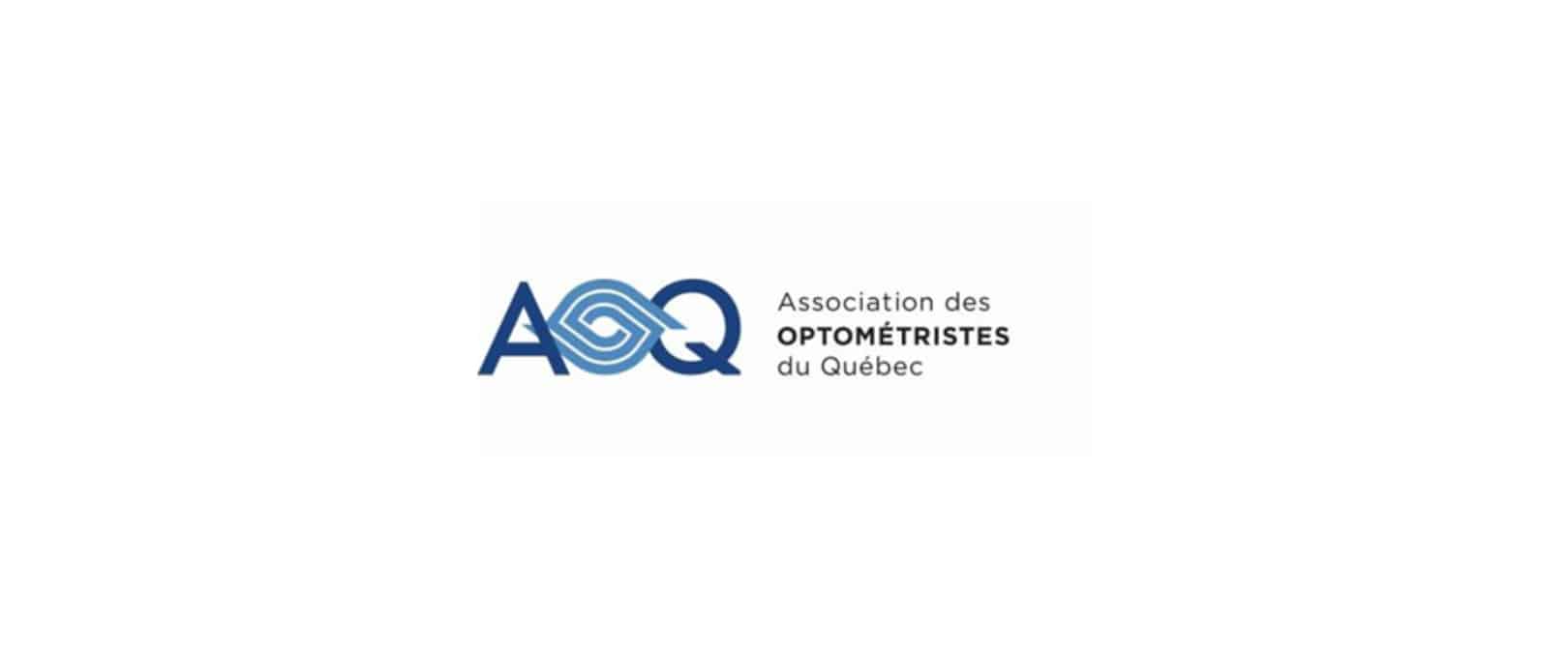A new study from Taiwan, published in the Journal of Ophthalmology reported that patients with retinitis pigmentosa (RP) have greater risk of developing the most common form of glaucoma, primary open-angle glaucoma, than those without RP.
This was a retrospective study using data from Taiwan’s National Health Insurance Research Database. More than 6,000 patients with RP were identified and they were compared to almost 25,000 patients without RP.
Over the study period, 1.6% of individuals with RP were diagnosed with glaucoma compared to 0.8% of individuals without RP. This study strengthens the case for regular eye exams. It also highlights the importance for clinicians to pay close attention to signs of glaucoma development in patients with RP in order to diagnose and treat the disease as early as possible.
Seraphin Shimmer Fall 2022 New Style
How lovely to pair a perfectly formed cat eye with stunningly gorgeous handmade acetates from Mazzucchelli, Italy. On top of that, dress it up with a dance of Austrian crystals and metal studs on the brow to create a cascade of textural articulation. Deliver elegance with Seraphin Shimmer 21.
Distributed by: www.ogieyewear.com
Transitions®: the clear lens that adapts to light for the perfect protection!
Did you know Transitions® has a lens for all your patients experiencing any level of light sensitivity? It’s true. Transitions® Light Intelligent Lenses™ seamlessly adapt to changing light situations by responding to surrounding light, changing from clear to dark when going outdoors and changing back to clear once inside. This is the only one smart clear lens that adapt to light and become dark in order to give to your patient this level of benefits
Plus, all Transitions lenses block 100% of UVA and UVB rays and help protect against sources of harmful blue light1 including digital devices, screens and especially bright sun. By optimizing the amount of light eyes receive, Transitions lenses also help reduce glare for more effortless sight.
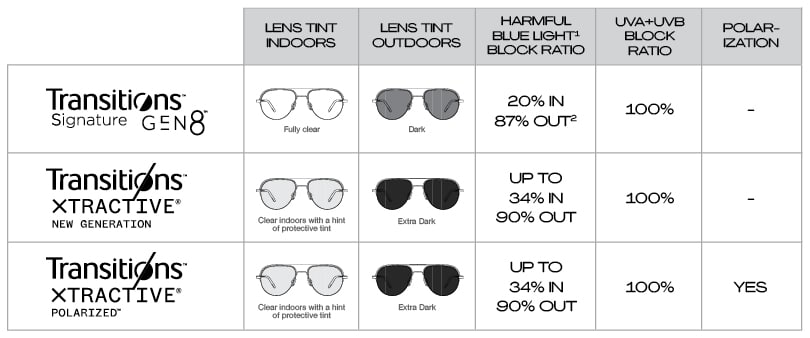
Compare the features and benefits Transitions® lenses offer and help patients find their perfect fit.
Transitions®Signature® GEN8™ lenses are our best overall photochromic lenses1 and they’re our clearest and fastest lens.
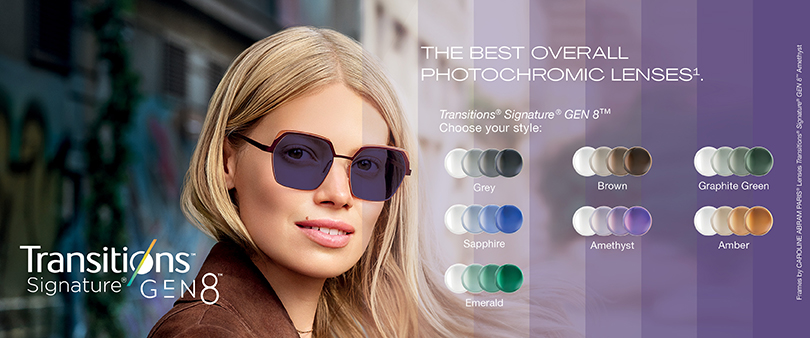
Transitions®XTRActive® new generation lenses are best for patients who are very light sensitive or frequently exposed to bright light. They deliver the best extra darkness and light protection1 from intense light indoors and outdoors, even in the car.
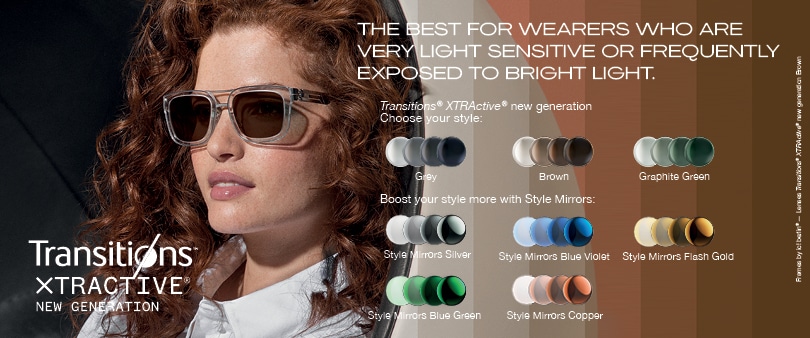
Transitions® XTRActive® Polarized™ are best for those who are frequently exposed to bright light and reflective glare. They combine the benefits of light intelligent lenses and dynamic polarization for extra protection in any light situation and deliver sharper vision and vivid colours.
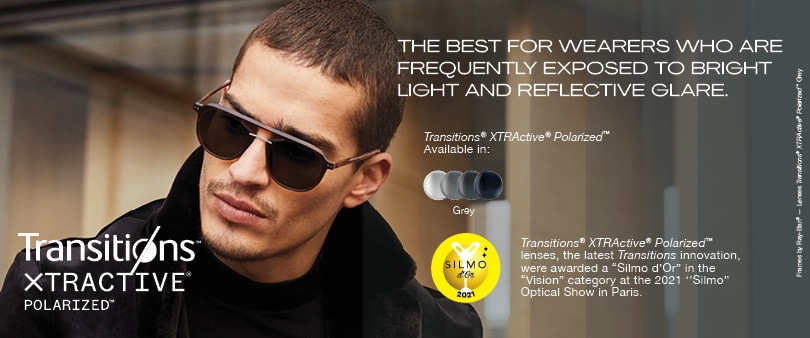
Visit Transitions.com/en-canadapro for educational resources or contact cscanada@transitions.com for marketing materials.
1Based on achieving the highest-weighted composite score among main everyday photochromic lenses across measurements of key photochromic performance attributes weighted by their relative importance to consumers.
Transitions, Transitions Signature and XTRActive are registered trademarks, and the Transitions logo, Transitions Light Intelligent Lenses, Transitions XTRActive Polarized and XTRActive Polarized are trademarks of Transitions Optical, Inc. used under license by Transitions Optical Limited. GEN 8 is a trademark of Transitions Optical Limited.
©2022 Transitions Optical Limited. Photochromic performance and polarization are influenced by temperature, UV exposure and lens material.
Click HERE for the press release.
This post is sponsored by Transitions Optical.
Regulator or Association – Who Does What?
The Opticians Association of Canada (OAC) is launching a new educational video which will help Opticians across Canada navigate between the organisations they depend on more easily.
This short video shows the difference between provincial regulatory bodies, who are there to protect the public in areas such as standards of practice, ethics and investigating complaints, and associations, which are there to protect and advocate for Licensed Opticians. Indeed, the Opticians Association of Canada includes with its membership personal professional liability insurance coverage and online continuing education for no additional charge.
More educational content on the topic will be available soon.
Click HERE for the full press release.
CORE Publishes Guidance to Increase Multifocal Contact Lens Fitting Success, Visual Performance, and Patient Satisfaction
Aiming to further accelerate the growth of multifocal contact lens prescribing, the Centre for Ocular Research & Education (CORE) has published guidance from three experts to help eye care professionals embrace the trend.
Issue 69 of Contact Lens Update is dedicated to evidence-based perspectives on multifocal fitting, visual performance, and patient satisfaction. It also includes a new patient-facing communication tool for in office and online use by practices. The latest edition and all past issues are available for free at ContactLensUpdate.com.
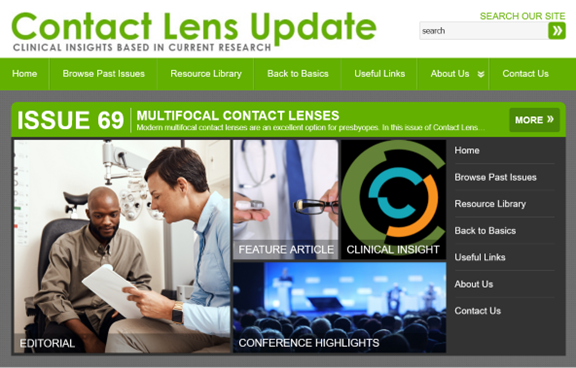
“A deeper understanding of multifocal contact lens advancements improves confidence among eye care professionals. In turn, that allows them to deliver better care for their presbyopic patients,” said CORE Head of Clinical Research Jill Woods. “This issue of Contact Lens Update demonstrates that with the right approach, consistent success is achievable.”
Marc Schulze, CORE Senior Clinical Scientist, authors the opening editorial. He shares clinical pearls that will help practitioners maximize their fitting success, such as using online tools and the appropriate fitting guides for specific lenses.
The feature article from Jennifer Fogt, Associate Clinical Professor at the Ohio State University College of Optometry, discusses the results of her study examining a comparison of the visual performance between multifocal contact lenses and progressive addition spectacles. The study found that multifocal contact lenses provide functional vision performance equal to progressive addition spectacle wear.
Sarah Guthrie, CORE Senior Research Scientist, shares insights from her poster first presented at the American Academy of Optometry annual meeting. This study explored the correlation between vision and satisfaction with multifocal contact lenses, linking that to the desire to continue wear.

Included in this issue is a CORE-produced patient facing handout that clearly and succinctly presents the benefits of multifocal contact lenses. This no cost resource can be used in the exam lane, for patient follow-up communications, as well as on practice websites and social media accounts.
Click HERE for the full press release.


